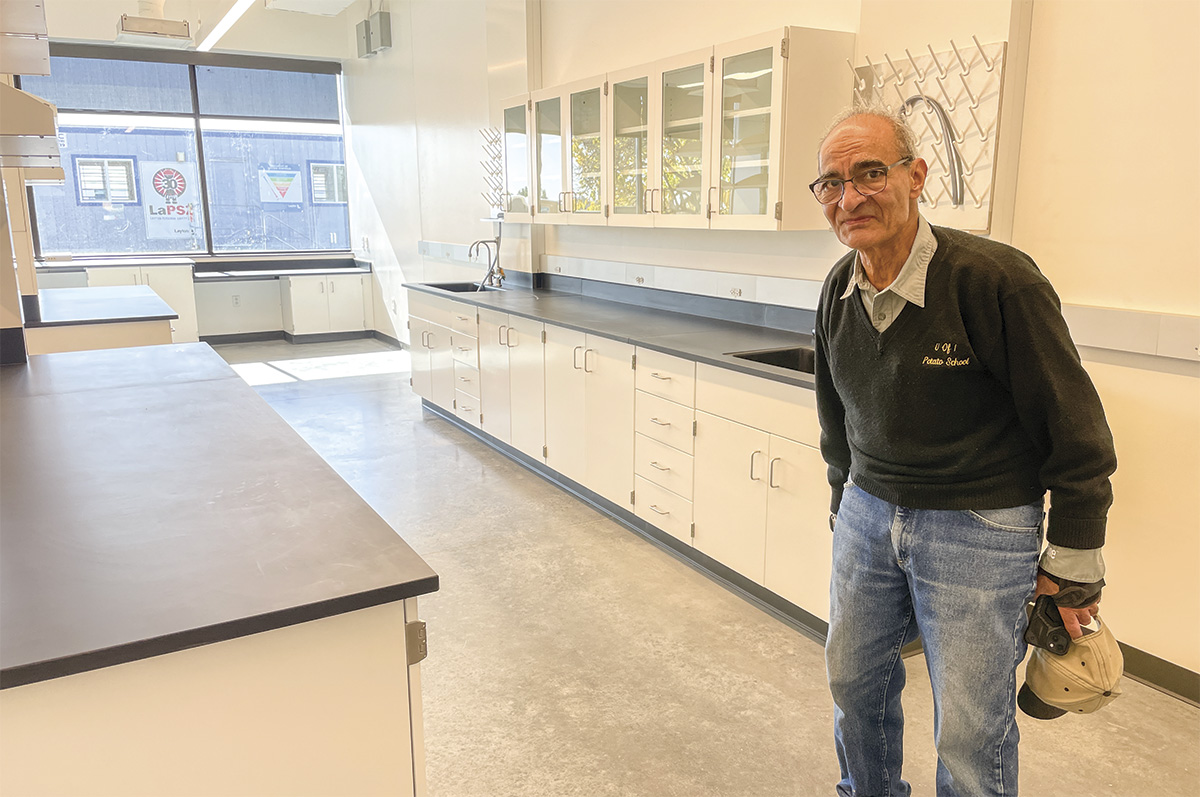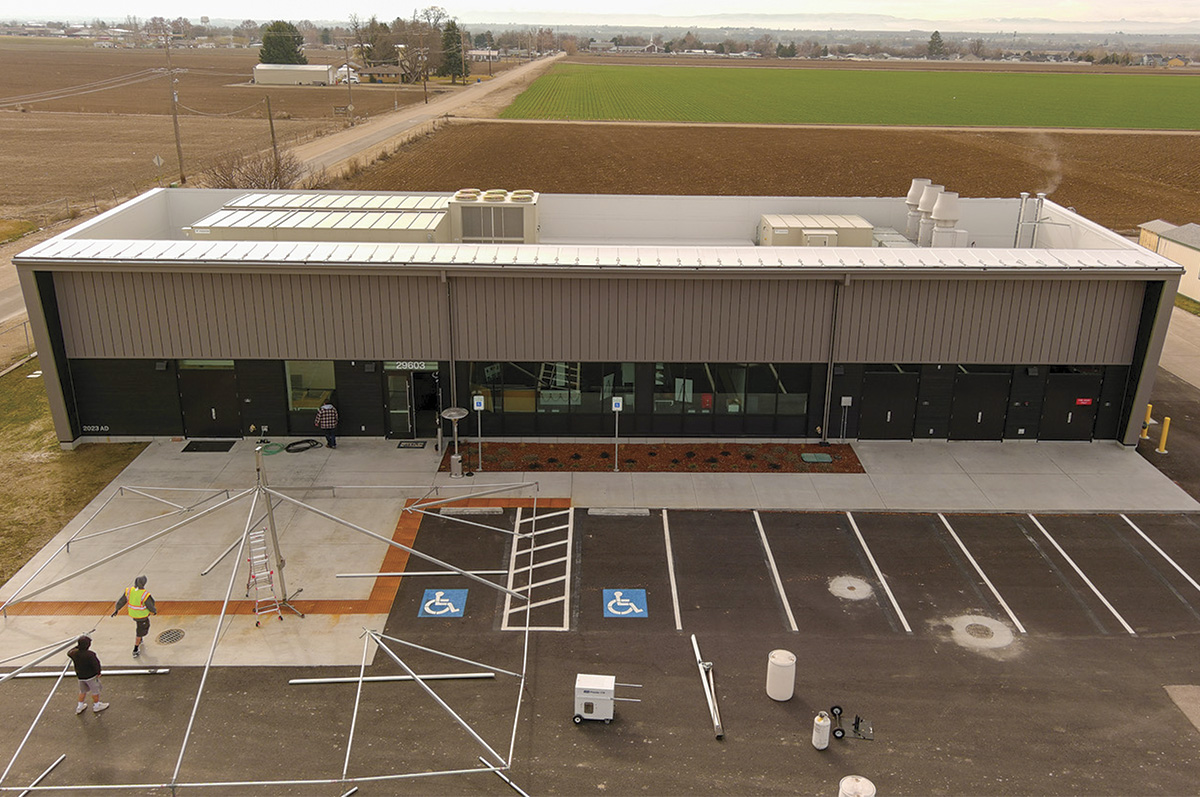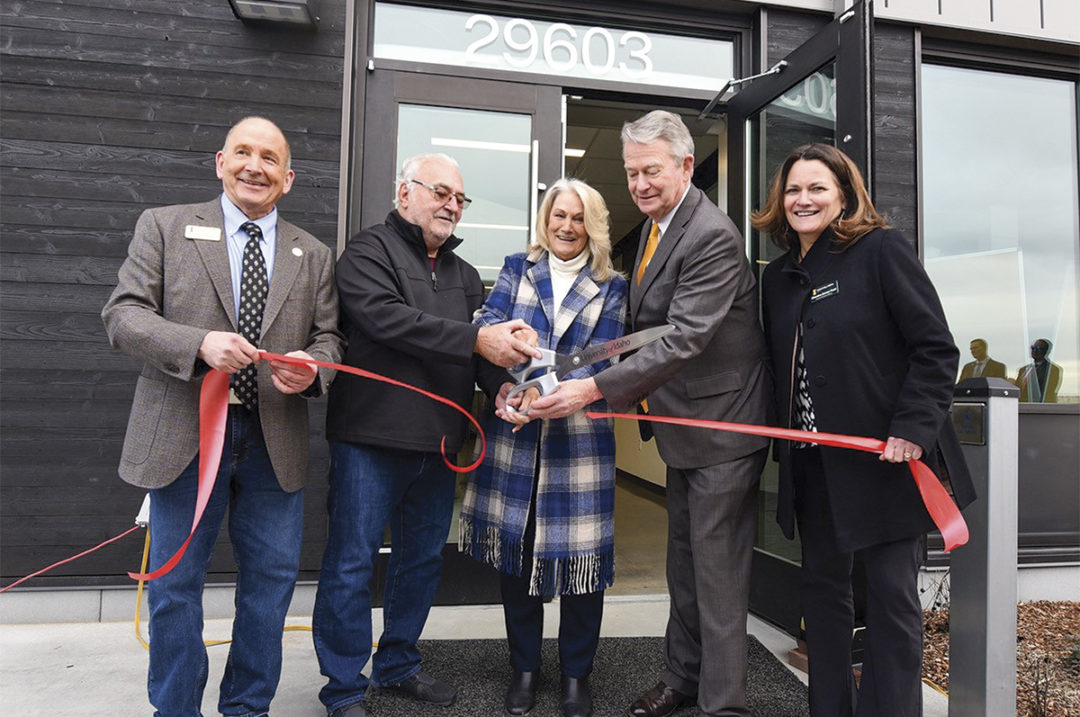A long-term vision came to life on Feb. 20 with the grand opening of the Idaho Center for Plant and Soil Health, which replaces aging and dilapidated infrastructure at the University of Idaho’s (U of I) Parma Research and Extension Center.
With a $13.1 million price tag, this 9,600-square-foot facility is poised to become a beacon of innovation in agricultural research. Focusing on critical fields such as nematology, pomology, plant pathology, microbiology and hops quality, this center aims to equip growers with the tools needed to thrive in an ever-evolving agricultural landscape.
“When I think about agriculture and agricultural production and technology, and how rapidly that is changing, it is extraordinary,” said Michael Parrella, dean of U of I’s College of Agricultural and Life Sciences (CALS) and special assistant to the president for agricultural initiatives. “So having a new facility that will enable us to embrace and use those technologies, I think that is a big part of what this facility represents.”
Initially facing closure in 2009 due to budget constraints, stakeholders recognized the center’s vital role, not only in the Parma area but Idaho agriculture as a whole. Their collective effort led to the formation of the Treasure Valley Agriculture Coalition, which ensured the center's survival for another 15 years and laid the groundwork for its revitalization that began in 2019.
“No one entity could have done it themselves,” Parrella said, acknowledging the $3 million in stakeholder donations, as well as investments from both the university and the state of Idaho. “We couldn’t do it as a university. It is unlikely the stakeholders could have put together enough resources to do that, and the legislature as well. But given the fact that it was a coalition here, and benefiting multiple stakeholders, we were able to get that support.”

Saad Hafez leads a tour of the new Idaho Center for Plant and Soil Health. Photo courtesy of the University of Idaho.
There are 118 different crops that are grown in the Parma area, making it one of the nation's most diverse agricultural regions. Parrella believes having an updated facility will help attract top-tier faculty to conduct ongoing research that benefits a wide range of crops.
“We want to bring in early career faculty that are doing cutting-edge work that are aware of the technological advances in agriculture,” Parrella said. “When I think about precision agriculture – the application of artificial intelligence to all applications of agriculture, a better understanding of soil health – all of these things I think this new facility is going to be able to have our faculty address and to do that in a pretty comprehensive fashion."
An example of this is CALS’s newest addition, Armando Falcon-Brindis. Brindis is an early career extension specialist in entomology stationed at the Parma Research and Extension Center, whose research agenda spans a broad spectrum of Idaho crops, with a focus on pests like two-spotted spider mites, thrips, aphids, wireworms and alfalfa weevil. Brindis also brings with him a better understanding of the use of X-ray technology when analyzing leaf cutter bees used to pollinate alfalfa crops.
“As a new researcher, [this facility] represents hope. It represents competitive research. It represents the future,” Brindis said.
Furthermore, CALS has raised about 85% of the necessary funding to establish an endowed chair position in nematology that will be based at Parma and will honor Saad Hafez, a longtime extension specialist and professor of nematology who is nearing retirement.

A bird's-eye view is shown of the Idaho Center for Plant and Soil Health building at the University of Idaho Parma Research and Extension Center. Photo by Bill Schaefer.
Parrella said, “This facility is only the start. Let’s use it to bring modern technology to agriculture through hiring the best faculty we can.”
Jeff Hartman, a fifth-generation vegetable seed grower in Parma, also expressed enthusiasm for the facility's revitalization, anticipating the wealth of knowledge and resources it will offer to the next generation of farmers like himself.
“As we find ourselves in situations that we need help, these folks are going to be there close. We can just go have a face-to-face conversation with these folks about what we need,” Hartman said. “The community is excited and grateful for what the University of Idaho and the College of Ag and Life Sciences is doing down here, as well as the potential for the future and growth.”
The grand opening of the Parma facility builds upon recent progress within CALS toward opening new facilities to ensure a bright and sustainable future for Idaho agriculture, including the ongoing construction of the Idaho Center for Agriculture, Food and the Environment (Idaho CAFE) in Rupert, which will include the nation’s largest research dairy.
“Basically, research done in Parma doesn't just benefit that area,” Parrella concluded. “Wheat research that's done there would benefit wheat production throughout Idaho; potato research does the same. So, in that sense, an investment in Parma means an investment in the broad agricultural industry in the state. This facility is helping production move forward.”




.jpg?t=1687979285&width=640)
.jpg?height=auto&t=1713304395&width=285)


